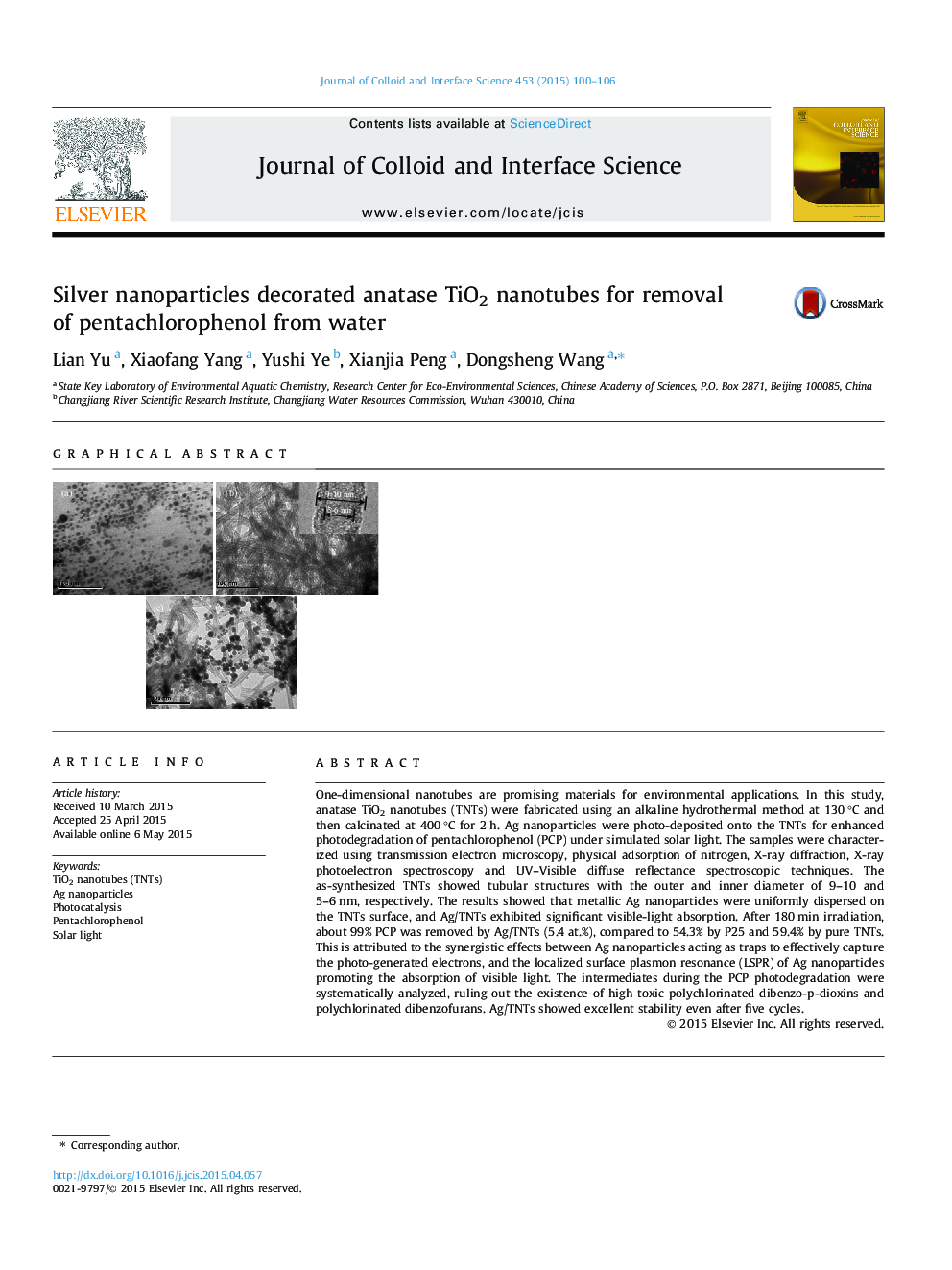| Article ID | Journal | Published Year | Pages | File Type |
|---|---|---|---|---|
| 606773 | Journal of Colloid and Interface Science | 2015 | 7 Pages |
One-dimensional nanotubes are promising materials for environmental applications. In this study, anatase TiO2 nanotubes (TNTs) were fabricated using an alkaline hydrothermal method at 130 °C and then calcinated at 400 °C for 2 h. Ag nanoparticles were photo-deposited onto the TNTs for enhanced photodegradation of pentachlorophenol (PCP) under simulated solar light. The samples were characterized using transmission electron microscopy, physical adsorption of nitrogen, X-ray diffraction, X-ray photoelectron spectroscopy and UV–Visible diffuse reflectance spectroscopic techniques. The as-synthesized TNTs showed tubular structures with the outer and inner diameter of 9–10 and 5–6 nm, respectively. The results showed that metallic Ag nanoparticles were uniformly dispersed on the TNTs surface, and Ag/TNTs exhibited significant visible-light absorption. After 180 min irradiation, about 99% PCP was removed by Ag/TNTs (5.4 at.%), compared to 54.3% by P25 and 59.4% by pure TNTs. This is attributed to the synergistic effects between Ag nanoparticles acting as traps to effectively capture the photo-generated electrons, and the localized surface plasmon resonance (LSPR) of Ag nanoparticles promoting the absorption of visible light. The intermediates during the PCP photodegradation were systematically analyzed, ruling out the existence of high toxic polychlorinated dibenzo-p-dioxins and polychlorinated dibenzofurans. Ag/TNTs showed excellent stability even after five cycles.
Graphical abstractFigure optionsDownload full-size imageDownload high-quality image (183 K)Download as PowerPoint slide
